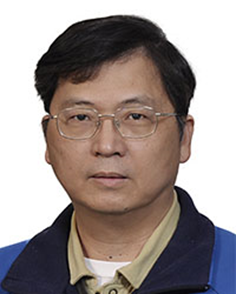Common Antenna Technologies and their Related Issues in Mobile Communications at Millimeter-wave Frequencies
Abstract:
The rapid evolution of mobile communications has fueled the growth of wireless technologies, with Beyond 5G (B5G) and 6G systems operating at millimeter-wave (mmWave) frequencies emerging as key areas of focus. At these frequencies, antenna performance becomes critical to overall system reliability and efficiency. Active phased arrays are expected to be widely deployed in both base transceiver stations (BTSs) and user terminals (UTs). However, successful implementation is challenged by material uncertainties, fabrication tolerances, and interference from surrounding components.
BTS antennas must meet stringent requirements for sidelobe suppression, cross-polarization control, and stable beam squint performance. Meanwhile, UTs typically employ antenna-in-package (AiP) designs to reduce form factor, introducing additional complexities related to thermal management, radiation consistency, beam steering accuracy, and calibration—challenges that are common across most mmWave wireless systems.
This lecture offers a comprehensive introduction on antenna design and system integration at mmWave frequencies, with an emphasis on B5G/6G applications. We begin by reviewing system requirements and application scenarios to contextualize antenna specifications and design choices. Various antenna architectures—such as beam-switching and multi-beam arrays—will be introduced, along with their beamforming principles and associated control architectures.
Beyond design considerations, the lecture also addresses essential system-level issues including heat dissipation strategies, RF component testing, measurement methodologies, and calibration techniques, covering both R&D and mass production contexts. This content is intended to equip engineers, researchers, and system integrators with the foundational knowledge necessary to develop and deploy high-performance antenna systems for the next generation of mobile communication networks.
Biography
Professor Hsi-Tseng Chou (IEEE Fellow’2012) received his B.S. in Electrical Engineering from National Taiwan University (NTU) in 1988 and his M.S. and Ph.D. from The Ohio State University (OSU) in 1993 and 1996, respectively. He began his research career at OSU’s ElectroScience Laboratory (ESL) as a graduate associate and postdoctoral researcher (1991–1998). He later served at Yuan Ze University (YZU) from 1998 to 2015 before joining the Department of Electrical Engineering at NTU, where he is currently a Distinguished Professor. His leadership roles include Dean of YZU’s Office of R&D, Director of NTU’s Graduate Institute of Communication Engineering, and Founding Director of NTU’s IoT Research Center.
Professor Chou's research focuses on high-gain and smart antennas, including Antenna-in-Package (AiP) and Antenna-in-Module (AiM) technologies, supported by a comprehensive foundation in antenna electromagnetics, numerical methods, and measurement techniques. His team is internationally recognized for its contributions to asymptotic high-frequency techniques in real and complex space, especially in Uniform Geometrical Theory of Diffraction (UTD)-based ray and beam methods. These solutions have been widely implemented in the design of high-gain antennas such as reflectors, reflectarrays, and phased arrays.
With over three decades of experience, Professor Chou has led the development of end-to-end RF subsystems at millimeter-wave frequencies, integrating RFICs and baseband DSP algorithms. He has collaborated with over 60 companies and research institutes globally, providing consulting services to more than 16 antenna-related firms and playing a pivotal role in developing Taiwan's antenna industry ecosystem. His contributions include forming the "High-Gain and Smart Antenna Industrial Technologies Consortium," nurturing companies in satellite TV, microwave links, and mobile base station antennas—many of which have become global leaders.
He has spun off two startups from his research teams, serves on corporate boards, and mentored several Ph.D. students in founding their own companies. His contributions extend to the IEEE community, where he has served on the IEEE Fellow and Teaching Award Committees, chaired the IEEE AP-S and EMC-S Taipei Chapters, and is currently appointed as Track Editor of the IEEE Transactions on Antennas and Propagation and Associate Editor for IEEE AWPL. He is also a board member of the Taiwan Microwave Association.
Professor Chou is a Fellow of IEEE, IET, AAIA, and AIIA, and an elected member of the International URSI Commission B, where he also serves as Taiwan member committee's Executive Secretary. He has published over 212 journal papers, 423 conference papers, two book chapters, one book, and holds 132 patents in antennas and RF technologies.
His numerous accolades include the IEEE Technical Field Award for Undergraduate Teaching (2014), multiple Outstanding Branch Counselor Awards, and the IET Career Achievement Medal in Communication Engineering (2021). In recognition of his industry impact, he received the Ministry of Economic Affairs’ Key Technology Elite Award (2011), the National Industry Innovation Award (2017), and other honors from Taiwan’s Ministry of Education and Academia Sinica. He has earned seven invention medals at Taipei Invention Show (2012–2015) and been named one of Taiwan’s Top Ten Rising Stars and Top Ten Young Persons.
Date and Time
Location
Hosts
Registration
-
 Add Event to Calendar
Add Event to Calendar
Loading virtual attendance info...
Speakers
Agenda
6:00PM-7:30PM: Presentation and Q&A


